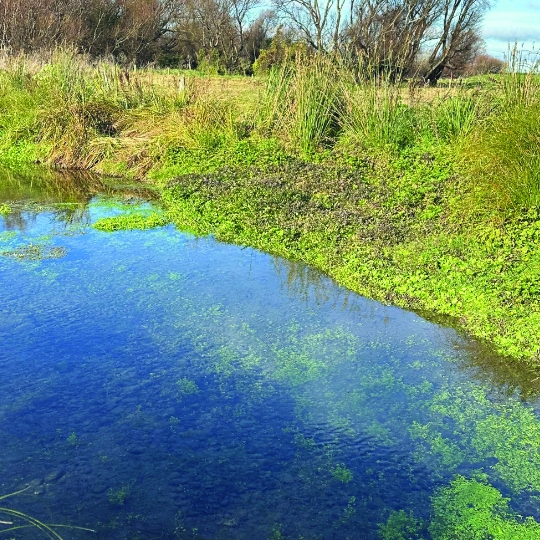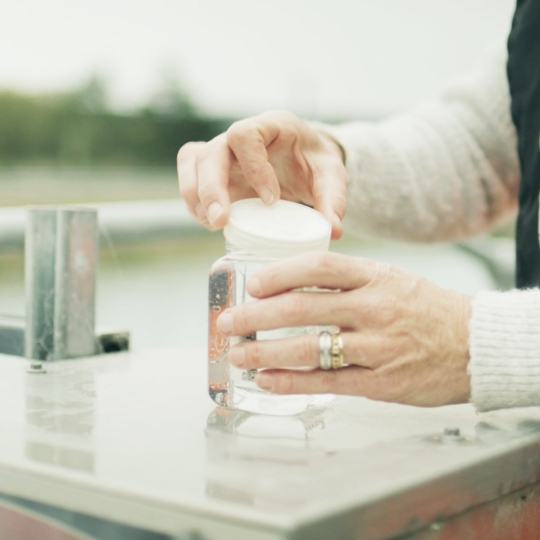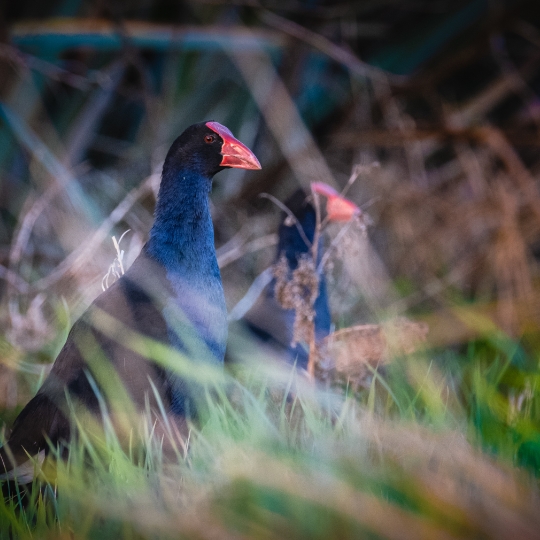

Scarlett Farm.
The health, happiness, and welfare of cows are directly impacted by the paddock. In taking proactive action to protect the land, it is not just the cows that are finding happiness.
CPWL shareholders, Tony, and Jean Scarlett, along with daughter and son-in-law Melissa Scarlett and Deane Parker and their three children Zoe, Leithan and Eddy are 50/50 share milkers on a 200ha contained dairy farm ten minutes outside Darfield, Canterbury.
Access to CPWL water presented a massive opportunity for Deane and Melissa who were only 60% irrigated before CPWL turned the tap on with Stage 2. Water security has provided the ability to summer safely and be self-contained on the farm, and while the Scarletts could have chased more milk solids, the forward-thinking couple has instead chosen to prioritise sustainability through self containment.
On-farm adaptation is a continual part of the family business, as they strive to improve the way they farm and care for their land. “When you have healthy soil, you have a solid foundation for healthy plants and animals. That is the perfect equation for a productive and profitable farm,” Deane explains.
“We do what is best for our land, our cows, and our environment, where possible. We are aligned with the principles of regenerative framing which started by choosing to place a greater focus on the health and biology of the soil. We started one simple yet powerful concept – the introduction of multi-species crop and pasture mixes.”
How it works.
The right kind of vegetation – deep-rooted plants for improved soil structure, reduced compaction, nitrogen fixation – and promoting water retention is at the heart of regenerative farming. Plants have also been chosen to enrich the soil with valuable nutrients, and organic matter, making the soil more resilient by creating a natural fertiliser and less reliant on artificial inputs all of which has improved profitability.
The system continues to evolve having very flexible rotations, planting a wider variety of crops, and this eliminating soil disturbance has resulted in improved soil conditions, flourishing biodiversity, record numbers of worms and paddocks humming with bees and other pollinators.
Fertility in the herd is much improved with a reduced empty rate. You can see the cows are happier from just the shine on their coats, as well as the amount of milk they produce.
Rising Costs.
We are in a period of disruption and reshaping of the global economy – fertiliser, animal feed and fuel have all surged in price, and continue to do so. There is no getting away from the fact that New Zealand is heavily exposed to the global increases impacting input costs on farms.
But this could not be further from the case at Scarlett Farm.
“By putting our soil health and biology front and centre, experimenting with the various crops complementing one another, and each plant bringing unique benefits to the soil – the paddocks have never looked healthier, or performed better.”
Crops with healthy soil can lead to healthier plants and less reliance on fertiliser, insecticides, herbicides, pesticides, and fungicides – all while potentially earning higher yield prices and reducing operational costs.
Minimising Costs.
One of the biggest moves on the farm has been using much less solid fertiliser, with investment being made in a Tow and Fert. Dean adds “With the cost of fertiliser now, it is a good cost to minimise.” Effectively delivering gains on both sides, the Tow and Fert means the farming system has significantly changed.
Tow and Fert is a range of liquid foliar spray machines that mix, apply, and maximise the effectiveness of fertilisers.
“We use 100% of our effluent on the farm, supporting a healthier environment that is more resistant to pests and diseases and photosynthesizes more easily, but ultimately, we are not reliant on costly insecticides and selective herbicides – we don’t spray”
Deane is confident that by adding diversity through the introduction of both foliage and liquid fertiliser, which is applied directly to the plants, uptake to plants has accelerated, nitrate leaching below the crop’s root zone has reduced and water quality draining into the aquifers has improved. The flow-on effect means growth rates are improved – resulting in no significant decrease in milk production, from fewer cows.
Consumer Demand.
Globally big and small food producers are starting to talk about soil health, water conservation, carbon sequestration, and regenerative farming. At the same time, consumers are more eager for a meaningful relationship with the land that creates their food, seeking out a sense of connection and impact – beyond the last bite.
Farmers and food companies are unlocking value at every stage of the food journey. Like never before, the food produced in Canterbury is becoming an essential part of the story. Not only is milk from regeneratively grazed cows a nutrient-dense superfood – it is also a valued ingredient that ticks all the boxes for the future focused consumer.
Working Together.
Knowledge sharing provides a vital role in increasing the adoption of regenerative methods. Consumers in markets such as the United States pay high premiums for food and fibre produced through regenerative systems. But how do you start? We asked Deane and Melissa.
“Begin with one paddock, you will start to see the benefits and that will encourage you further. Going back to basics, and regenerating the land offers a timely opportunity to experiment. I cannot explain how, but farmers can smell when soil is healthy – because our livelihoods depend on it, smell your soil.”
“Experiment with tools and plantings to find out what works in your paddocks – learning through experimentation is essential. Talk to your neighbours, talk to your local community of farmers.”




